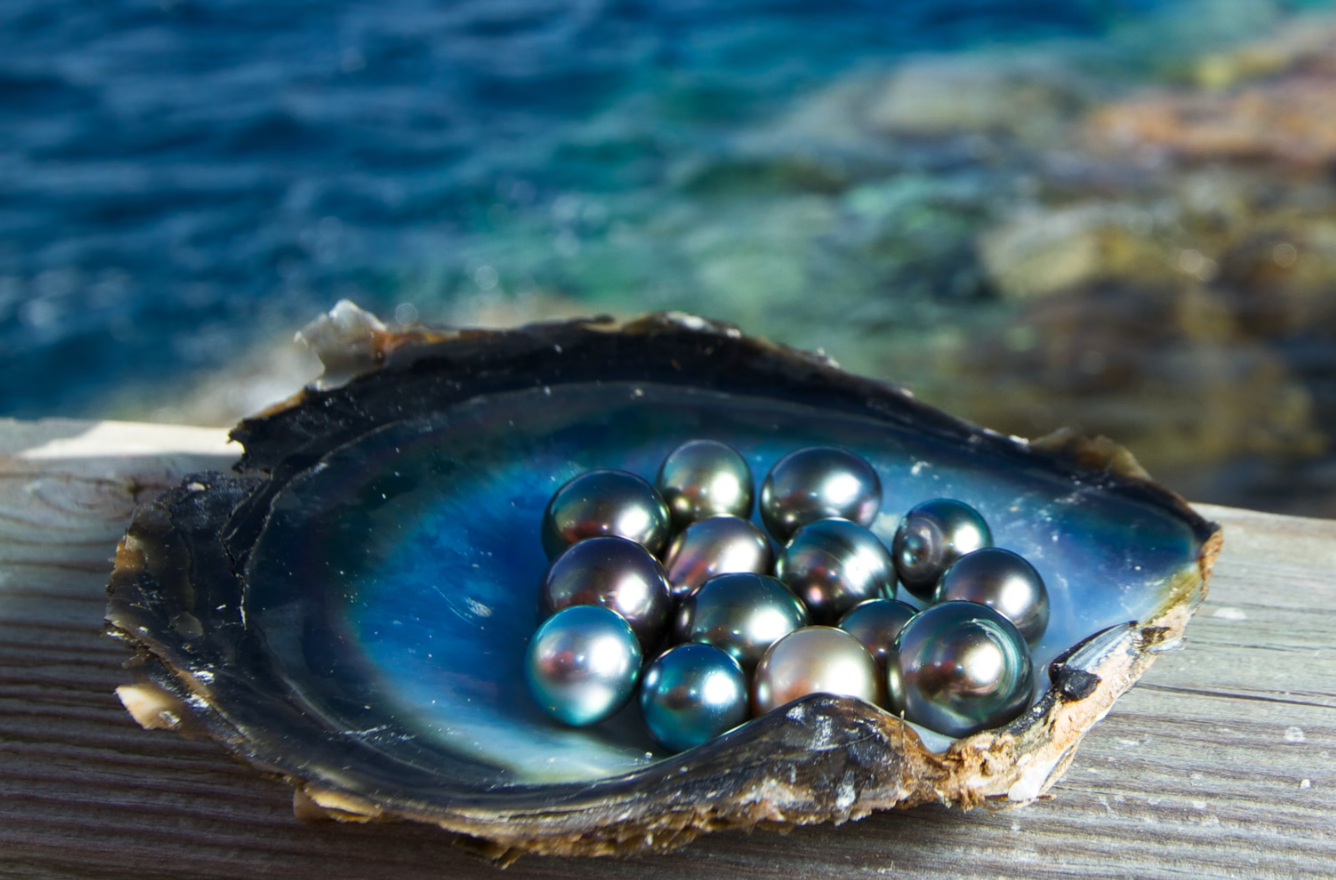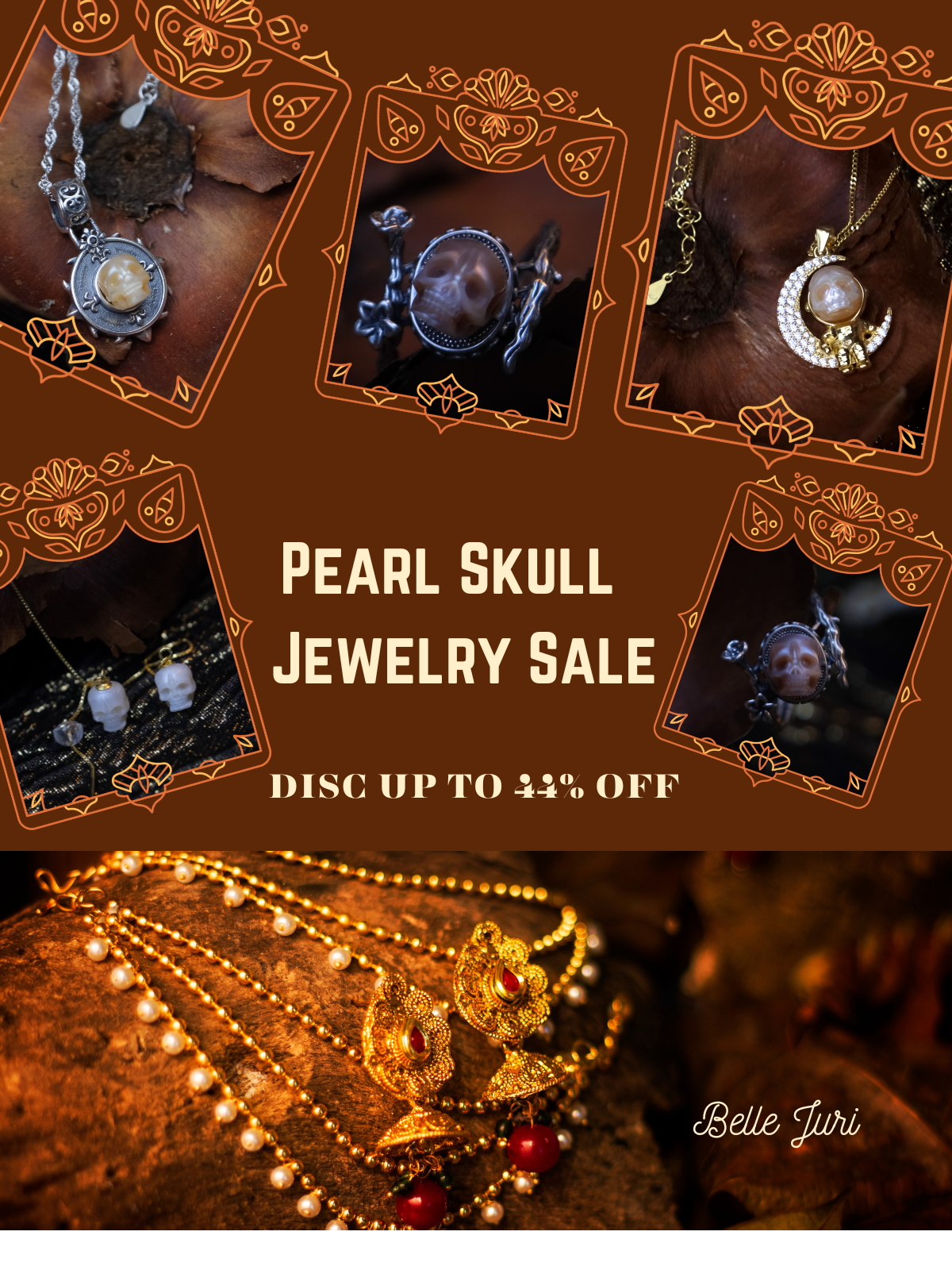
Don’t know how to buy pearls? Mastering Pearl Buying: Your Essential Guide

Pearls have long captivated humanity with their timeless beauty and unique formation process. As natural wonders born from the depths of the ocean, each pearl tells a story of nature's artistry and elegance. In this guide, we delve into the fascinating world of pearls, covering everything from their formation to care tips, ensuring you appreciate and care for these treasures of the sea.
Formation of Pearls

Pearls are formed within certain species of mollusks, such as oysters and mussels. When an irritant, such as a grain of sand or tissue fragment, enters the mollusk's shell, the organism secretes layers of nacre (mother-of-pearl) around the irritant as a defense mechanism. Over time, these layers build up, forming a lustrous pearl. Natural pearls are rare and highly prized due to their organic formation process, while cultured pearls are intentionally cultivated by inserting a nucleus into the mollusk.
Types of Pearls



According to the environment in which pearls grow, they are categorized into freshwater pearls and saltwater pearls. Freshwater pearls are produced by mussels in various lakes, rivers, and streams. They come in a variety of colors such as white, pink, orange, purple, and others, and exhibit diverse shapes. Most are not perfectly round, with many being elliptical, oblate, rice-shaped, waist-shaped, or irregular.

Saltwater pearls are produced by marine mollusks in the ocean. They come in colors like white, gold, silver-gray, transparent green, and others, depending on the species and environment. Saltwater pearls are generally very round, with a few being elliptical, waist-shaped, or irregular in shape.
In terms of how they are formed, pearls are typically categorized as wild (natural) or cultured. Cultured pearls include both nucleated and non-nucleated types.

Wild pearls, also known as natural pearls, are exceedingly rare and virtually absent from today's market. Most pearls available for purchase are cultured pearls. Wild pearls form when an accidental irritant, such as sand, enters the body of oysters or mussels, stimulating the secretion of nacre. However, these pearls are unpredictable and have a very low likelihood of forming. They are often small or poorly shaped and thus not suitable for jewelry, making them less valuable.
Currently, cultured pearls dominate the market. Most freshwater pearls are cultured without nuclei. This process involves cutting a small piece of mantle tissue from one mussel and implanting it into another to stimulate nacre secretion. It takes approximately 3-5 years from the cultivation of mussels to the harvesting of pearls. In contrast, most saltwater pearls are cultured with nuclei. This method involves inserting a spherical nucleus into a mother oyster to encourage nacre deposition around it, resulting in a more consistently round shape. Cultivating saltwater pearls, such as Akoya pearls, typically takes 3-6 years, while Tahitian pearls and South Sea pearls may require 5-6 years.

The terms commonly used to describe pearl "types" are not strictly defined. They are named based on cultivation environments, mollusk species, or geographical regions, serving as consumer-friendly classifications that are widely recognized and understood.
- Freshwater Pearls: (named based on growth environment)
Mainly produced by triangle sail mussels, with 95% originating from China, these are the most popular varieties on the market. They range widely in size, generally from 5-11 mm, with newly nucleated freshwater pearls reaching sizes of 11-16 mm. Available in colors like white, pink, orange, and purple, they offer consumers a wide range of choices.

- Akoya Pearls: (named based on the mollusk they grow in)
The primary type of saltwater pearl, mainly produced by Akoya oysters in Japan and China. These pearls are typically small, ranging from 5-9 mm in diameter, with very few exceeding 9 mm. They are mostly round and come in colors such as white and gold.

- Tahitian Pearls: (named after the region of growth)
These saltwater pearls are predominantly cultivated in French Polynesia, specifically on the island of Tahiti. Known for their ability to produce various dark colors, including silver-gray, gray-black, green, blue, and brown, they are often referred to as black pearls.

- South Sea Pearls: (named after the region of growth)
Also saltwater pearls, primarily produced in the South Pacific Ocean, including the northern coast of Australia and the southern waters of Malaysia and the Philippines. These pearls typically range in color from white to light and dark gold.

Proper care is essential to maintain the beauty and longevity of pearls.

Caring for pearls requires attention to detail to preserve their luster and beauty over time. Here are essential tips for pearl care:
- Avoid Chemicals and Perfumes: Pearls are organic gems sensitive to acids, chemicals, and perfumes. Always apply cosmetics, hairspray, and perfume before putting on your pearls to minimize exposure.
- Store Separately: Store pearls separately from other jewelry to prevent scratching. Use a soft cloth pouch or a lined jewelry box with compartments to keep each pearl piece individually protected.
- Keep Away from Heat: Avoid exposing pearls to direct sunlight or extreme heat, as excessive heat can dry out and damage the pearls' organic material.
- Gentle Cleaning: Clean pearls regularly with a soft, damp cloth after each wearing to remove oils and dirt. For deeper cleaning, use a mild soap solution (such as baby shampoo) and a soft brush, like a makeup brush, to gently scrub the pearls. Rinse thoroughly with clean water and pat dry with a soft cloth.
- Avoid Water Exposure: Pearls should not be exposed to water for extended periods. Remove pearl jewelry before bathing, swimming, or doing household chores to prevent water damage.
- Restringing: If you wear your pearls often, consider having them restrung periodically by a professional jeweler. Silk thread used for stringing pearls can stretch over time, increasing the risk of breakage.
- Wear with Care: Put on pearl jewelry last when getting dressed and remove it first when undressing to minimize exposure to cosmetics, perfume, and sweat.
- Professional Care: For valuable or antique pearl jewelry, seek professional cleaning and maintenance from a reputable jeweler experienced in handling pearls.
By following these care tips, you can ensure that your pearls retain their natural radiance and elegance for years to come. Regular maintenance and proper handling will help preserve their delicate beauty and longevity as cherished pieces of jewelry.

The End
Pearls embody a rare harmony of natural beauty and human craftsmanship. Understanding their formation, types, grades, authenticity identification, quality assessment, and proper care ensures you appreciate and preserve these exquisite gems for generations to come. Whether adorning yourself or gifting a loved one, pearls remain an enduring symbol of elegance and sophistication, connecting us to the wonders of the ocean and the artistry of nature.



